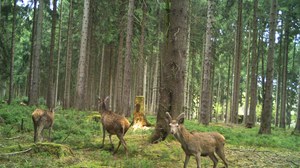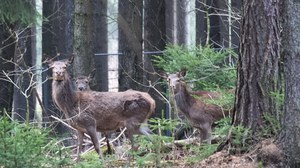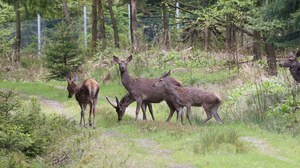The Grillenburg deer study and research enclosure
The study and research enclosure was established in 1959 within the Tharandt Forest north of Grillenburg. Roe deer and red deer is kept unter natural conditions, which allows for various teaching and research activities.
 © Professur für Waldschutz
© Professur für Waldschutz
The Grillenburg deer study and research game enclosure
Forests have a lot of different functions. People use forests, for example for recreation or as a versatile ressource. Furthermore forests are habitats for a multitude of animal und plant species. These various demands may lead to conflicts.
Deer is an important part of forest ecosystems. However, depending on human objectives, deer is able to cause damage to forests and disturb or even prevent the regeneration of forests if the populations are too high. In recent times, efforts to converse forests to mixed stands with a high diversity in structure and species have been intensified. Excessive deer populations, in particular roe and red deer, are often an inhibiting factor for a successful establishment of these stands. A proven but very expensive option that is used in many federal states of Germany is to fence these areas. But fencing large areas also has a lot of significant disadvantages. Deer is looked out of areas with particularly nutritious food and good covering and the pressure on adjacent areas is increased. A better option is the protection of individual trees using the large variety of existing methods and techniques, or the regulation of game populations by hunting.
In the study and research enclosure deer is kept under close-to-nature, yet controllable conditions, which allows for the testing of repellent methods. This means that the effectiveness of new chemical, mechanical or acoustic deer repellents can be studied from a scientific point of view. In contrast to the field the deer population is known and can be varied if required.
In particular the exhibition enclosure is used for seminars and demonstration purposes for forestry students. Important exhibition objects such as examples for bark peeling and browsing damage and bark beetle galleries are presented. These objects are also available for the education of foresters and for further education purposes.
The study and research enclosure has a fenced size of 20 ha. This is separated into:
- the red deer enclosure: 9,0 ha for 6 to 10 animals,
- the roe deer enclosure: 4,5 ha plus 4,5 ha spare enclosure for 6 to 10 animals
- the exhibition enclosure, which holds relevant samples (e. g. bark peeling damage, browsing simulation site: 2,0 ha


